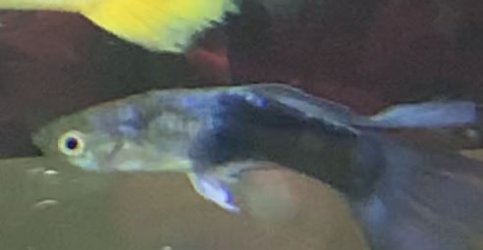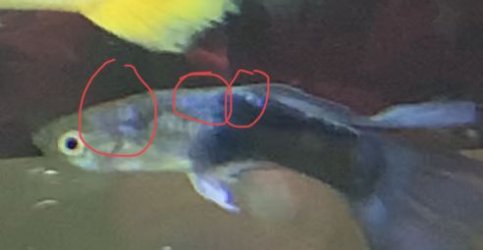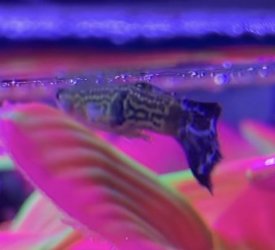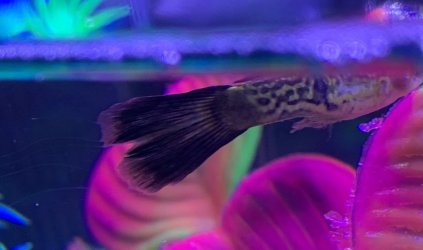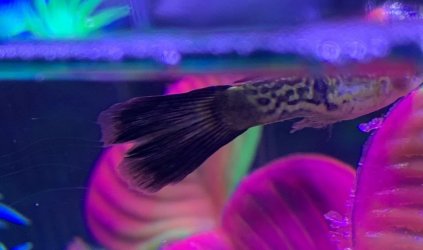I can't tell anything from the picture, but if fish are getting cream, white or grey patches on their body, it is excess mucous caused by external protozoans eating the skin.
If the fish get a cream or white film over their body and fins, it is excess mucous caused by poor water quality or something in the environment that is stressing them out.
If they get white fluffy stuff it is fungus. The fish in the picture does not appear to have fungus.
-----------------------
Guppies are regularly infected with external protozoans and the easiest way to treat them is with salt.
You can add rock salt (often sold as aquarium salt), sea salt or swimming pool salt to the aquarium at the dose rate of 1 heaped tablespoon per 20 litres of water. If there is no improvement after 48 hours you can double that dose rate so there is 2 heaped tablespoons of salt per 20 litres.
If you only have livebearers (guppies, platies, swordtails, mollies), goldfish or rainbowfish in the tank you can double that dose rate, so you would add 2 heaped tablespoons per 20 litres and if there is no improvement after 48 hours, then increase it so there is a total of 4 heaped tablespoons of salt per 20 litres.
Keep the salt level like this for at least 2 weeks but no longer than 4 weeks otherwise kidney damage can occur. Kidney damage is more likely to occur in fish from soft water (tetras, Corydoras, angelfish, gouramis, loaches) that are exposed to high levels of salt for an extended period of time, and is not an issue with livebearers, rainbowfish or other salt tolerant species.
The salt will not affect the beneficial filter bacteria but the higher dose rate will affect some plants. The lower dose rate will not affect plants.
After you use salt and the fish have recovered, you do a 10% water change each day for a week using only fresh water that has been dechlorinated. Then do a 20% water change each day for a week. Then you can do bigger water changes after that. This dilutes the salt out of the tank slowly so it doesn't harm the fish.
If you do water changes while using salt, you need to treat the new water with salt before adding it to the tank. This will keep the salt level stable in the tank and minimise stress on the fish.
-----------------------
Ammonia will stress fish and cause them to produce excess mucous. It also poisons them. If the pH is above 7.0, any ammonia produced is more toxic.
You need to do a 75% water change and gravel clean the substrate any day you have an ammonia or nitrite reading above 0, or a nitrate reading above 20ppm. Make sure any new water is free of chlorine/ chloramine before it's added to the tank.


